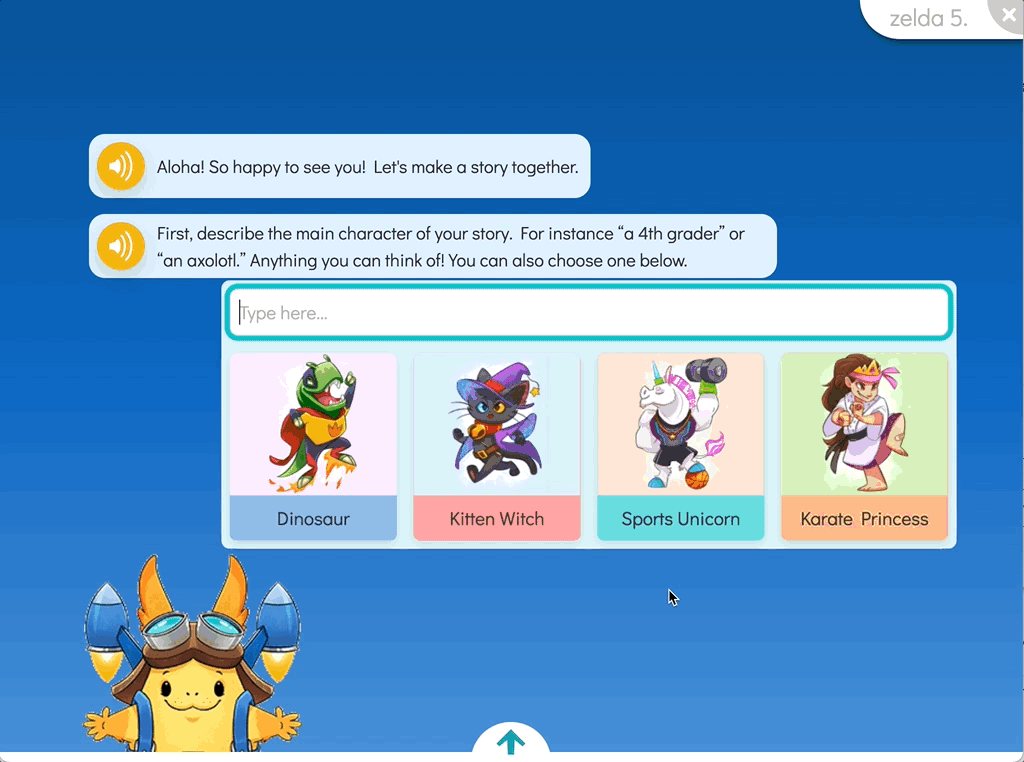Choice Texts
Improving learning outcomes for young readers by making reading passages more fun and personal.
Project info
Company: eSpark Learning
Timeline: 4 months from inception to beta delivery
Product team: PM, product designer, 2 learning designers, 4 engineers
My role as lead product designer
Lead discovery efforts with stakeholders, students and teachers
Plan, execute, test and deliver all designs
Prompt engineering for OpenAI text and Leonardo.ai images
Work with learning designers and devs to ensure quality
Impact
An early draft of an in-house study shows that eSpark students with a high exposure to Choice Texts saw 20-30% improvement on quarterly RIT scores, compared to eSpark students with low exposure to Choice Texts
3 Million unique stories have been created by our students in the first year of release
These reading activities are the highest rated in eSpark’s 10 year history
Problem
Reading passages to assess reading comprehension skills are often generic and boring. Kids are clicking through quizzes without much effort.
Can we use generative AI to make these passages more meaningful for students, leading to more engagement and better learning outcomes?
What did we build?
Before starting a reading comprehension quiz, students work with an animated character named Rocky to create their a unique reading passage by describing the main character and setting for their story.
We use the OpenAI API and Leonardo.ai images services to instantly generate a personalized story at the student’s exact reading level.
After reading the story, Rocky asks them reading comprehension questions and helps them if they are stuck.
Students can save their stories to the class library where they can read and like their friends’ and classmates’ stories too.
Our approach
We wanted kids to feel like they have some ownership over their story and give them lots of choices, but the focus of the activity should remain on the reading and comprehension questions.
What choices are most meaningful for kids? How can kids create a meaningful story quickly? To find out, we conducted a series of design and testing sessions with 4th and 5th graders in Chicago Public Schools.
Designing student choice
Limit story choices
We did design and testing sessions with kids in Chicago Public Schools and found out that these 4 choices gave kids the most sense of control and ownership: Main Character, Name, Traits and Story Setting.
Presets and open text input
This activity was for kids ages 5-13 with a wide range of abilities, so we needed a pattern that allowed non-readers and proficient readers both to make choices appropriate for their development
Older students can type a character description or setting.
Designing a flexible system
Even though this activity was limited in scope (create a story, answer questions about the story), we expected to create other activities for Reading, Math and perhaps Writing, that would require many types of user inputs, system prompts and artifacts.
Conversational UI
To guide kids through the story-creation process, we opted for a conversational UI that allowed for a variety of age-appropriate user inputs.
Focus
This conversational UI can be shown or hidden to allow for focus on a playful back and forth with a character or the text artifact.
Other applications
Months after building Choice Texts we were able to reuse the pattern for a brand new Writing Curriculum, speeding up the development of these new activities drastically.
Side-by-side view
We improved on the quizzing interface by having the conversational UI side by side with the story. This interface will allow for students to interact directly with the text as they respond to reading and/or writing prompts.
Images!
We worked hard on developing an image generation system that consistently creates compelling and fun images while reducing the risk for strange artifacts or off-topic image elements.
In the end we ended up with a 2-step process where OpenAI generates an precisely formatted image prompt based on the story. The formatted image prompt is then sent to the Leonardo.ai API.
Read more about the process here: Article: eSpark Learning Brings Personalized Learning to Life Through Leonardo’s Image Generation API
Class Library
After shipping an early version of Choice Texts we realized quickly that students wanted a way to save and share the stories they created.
Conclusion
Choice Texts was eSpark’s first foray into using generative AI to increase student engagement and outcomes. Using the patterns and systems established in Choice Texts, eSpark was able to launch Choice Math, Themed Choice texts, AI-generated Decodable Readers, eSpark Writing, and Genre-based Choice Texts in the same year. It has transformed eSpark’s curriculum offering with new content and subjects

Choice Text enabled a variety of genre-based activities like Fables and Poetry

Genre Based Choice Texts allow students to explore different genres of writing by creating their own unique stories.

eSpark launched Choice Texts Decodables where early readers can create their own unique stories at their reading level

Teachers often look for lesson materials around themes and holidays. eSpark has released hundreds of Choice Text activities based on seasons, holidays, and important celebrations like Black History Month.
Choice Text enabled eSpark to launch eSpark Writing within months














